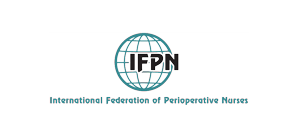FACTORS ASSOCIATED WITH INCREASED RISK POSTOPERATIVE BLEEDING (PB) IN PATIENTS AFTER CARDIAC SURGERY
Maria Bonikou, Anastasia Kotanidou, Georgios Vasilopoulos, Georgia Toulia, Nektaria Michopanou, Antonia Kalogianni
Wednesday, April 1, 2020
Publication year:
2020
Authors:
- Bonikou Maria, RN, MSc, PhD, Cardiac Surgery Intensive Care Unit, “Evaggelismos” General Hospital of Athens
- Kotanidou Anastasia, Professor of Intensive Care, School of Medicine, National and Kapodistrian University of Athens.
- Vasilopoulos Georgios, Assistant Professor, Faculty of Health and Caring Professions, Department of Nursing, Athens University of Applied Sciences, Greece
- Toulia Georgia, Επίκουρη Καθηγήτρια, Τμήμα Νοσηλευτικής, Πανεπιστήμιο Δυτικής Αττικής
- Michopanou Nektaria, RN, MSc, PhD (c), Cardiac Surgery Intensive Care Unit, “Evaggelismos” General Hospital of Athens.
- Kalogianni Antonia, Associate Professor,Department of Nursing,University of West Attica Greece
Keywords index:
Pages: 84-101
Abstract:
Introduction: Postoperative Bleeding (PB) is the most common complication after cardiac surgery but is accompanied by negative outcomes. Aim: was to investigate the factors associated with an increased risk of PB in patients after cardiac surgery. Material and Methods: The sample of the study was patients who were admitted to the Cardiothoracic Surgery Unit of a general hospital after cardiac surgery. Data collection was carried out by a form that included a) Social-demographic, b) Preoperative c) Postoperative and d) Postoperative characteristics. PB was defined as 100 ml of blood loss per hour from the chest drainage tube.Results : The sample consisted of 106 patients. The mean age of participants was 66.8 years (SD = 10 years) and 73% were male. 15.1% presented PB within the first 24 hours after surgery. Intraoperatively, the mean duration of ischemia (p = 0.042) and cardiopulmonary bypass (CPB) (p = 0.031) was significantly higher in those who presented with PB. Multivariate logistic regression showed that PT [(OR 95% 0.41 (0.22-0.76)] and INR [(OR 95% 0.10 (0.03-0.97)] in the first 24 hours after surgery and duration of CPB [(OR 95% 1.02 (1.00-1.03)] were independently associated with the appearance of PB. Additionally sex (p = 0.021), intraoperative hypothermia ( p = 0.004) and CABG (p = 0.018) were found to be independent of the amount of thoracic drainage.
Conclusions: Prothrombin time, INR in the first 24 hours postoperatively, and duration of CPB were found to be independently associated with PB. Additional gender, intraoperative hypothermia, and CABG were found to be independently related with increased blood loss from chest drainage. Knowledge of the factors associated with the increased bleeding is critical for nurses so they can provide prophylactic interventions and early postoperative treatment.
Download PDF


